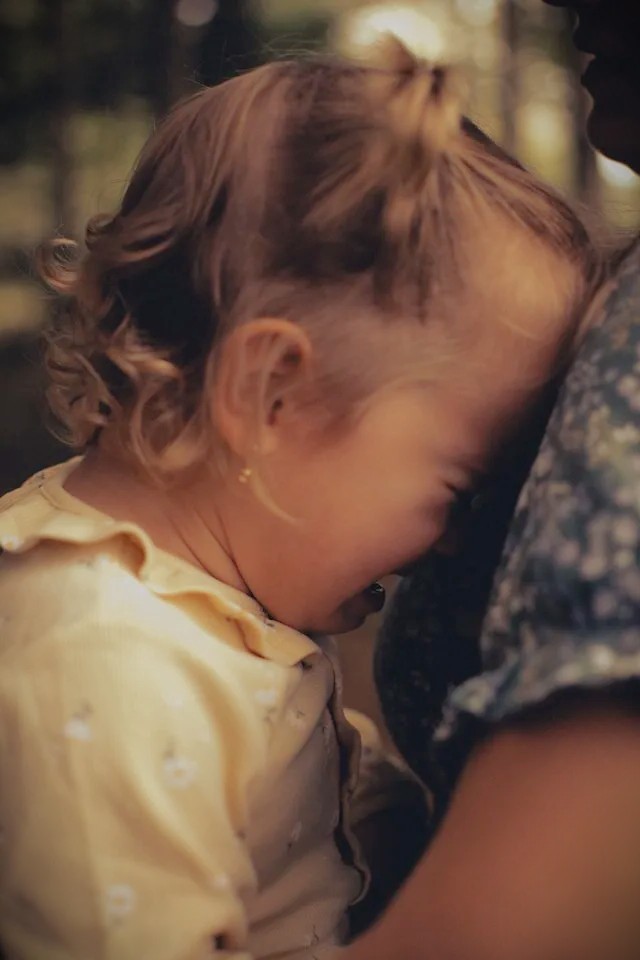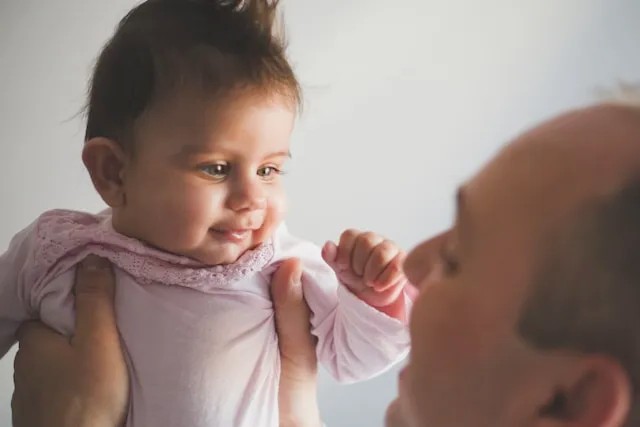Table of Contents

How to handle when baby cries when mom/dad leaves is a common challenge that many parents face, especially when their little ones experience separation anxiety. Between 8 to 18 months, babies become highly aware of their caregiver’s presence and absence, which can lead to tears, clinginess, or fussiness. This reaction is completely normal and is actually a sign of a strong emotional bond.
Understanding why your baby cries and learning effective strategies to comfort them can make departures smoother and less stressful for both you and your child. In this article, we’ll explore the reasons behind separation anxiety, practical ways to prepare your baby, comforting techniques, and expert tips to handle these moments with confidence and patience.
Understanding Why Babies Cry When Parents Leave

Babies crying when a parent leaves is a normal part of early childhood development. How to handle when baby cries when mom/dad leaves starts with understanding the reasons behind this behavior. Separation anxiety usually begins around 6–8 months and peaks between 10–18 months, as babies develop strong attachments to their primary caregivers.
During this stage, babies are aware of who provides comfort and security. When a parent steps away, even briefly, it can trigger fear and stress, which they express through crying, clinging, or fussiness. Recognizing that this behavior is a sign of healthy emotional development—not misbehavior—helps parents respond calmly and confidently.
H3: Developmental Milestones and Attachment
- 6–12 months: Stranger anxiety and separation distress begin.
- 12–18 months: Babies understand absence more clearly and may protest longer.
- Emotional cues: Crying, clinging, or fussiness are natural ways to communicate stress.
💡 Tip: Viewing your baby’s tears as communication rather than defiance allows you to respond with patience and reassurance, supporting emotional growth.
Preparing Your Baby for Separation
One of the most effective ways to ease stress is knowing how to handle when baby cries when mom/dad leaves by preparing them ahead of time. Gradual exposure to short separations, combined with predictable routines, helps babies feel safe and builds trust in their caregivers.
H3: Establish a Predictable Routine
- Create a simple, consistent goodbye ritual: a hug, a wave, or a short phrase like “See you soon!”
- Start with brief separations and slowly increase the time apart to help your baby adjust.
- Consistency reassures babies that departures are temporary and that parents always return.
H3: Use Positive Reinforcement
- Praise your baby for staying calm, even for a few moments.
- Keep goodbyes short and confident; drawn-out farewells may increase anxiety.
💡 Tip: Practicing departures at predictable times, like leaving for errands or short outings, teaches your baby to anticipate and trust the routine, reducing crying episodes over time.
Comforting Techniques During and After Separation

Knowing how to handle when baby cries when mom/dad leaves involves using comforting techniques that reassure your baby and build emotional security. Even short absences can be upsetting, but consistent comfort helps babies feel safe and supported.
: Comfort Items
- Provide a favorite blanket, stuffed toy, or other familiar object to give your baby a sense of security.
- Having something familiar nearby can reduce anxiety when a parent leaves.
: Calm Voice and Reassurance
- Speak gently and confidently during goodbyes.
- Avoid sneaking away; consistent, predictable actions help your baby trust that you will return.
: Distraction and Engagement
- Engage a caregiver, sibling, or playmate to divert attention.
- Singing, interactive games, or toys can help redirect focus and reduce stress.
💡 Tip: Consistently pairing departures with comfort, attention, and reassurance teaches your baby that separations are safe and temporary.
If you want to learn more about Why Babies Cry and How Responding Builds Trust, please visit this article.
When to Seek Professional Advice

While crying during separations is normal, it’s important to recognize situations where additional support may be needed. Understanding how to handle when baby cries when mom/dad leaves includes knowing when professional guidance is appropriate.
H3: Warning Signs
- Crying or distress that persists beyond typical developmental stages.
- Refusal to eat, sleep, or engage in normal activities when a parent leaves.
- Regression in behavior, such as loss of previously learned skills or increased clinginess beyond the expected age range.
H3: Seeking Help
- Consult a pediatrician if your baby shows prolonged or extreme separation anxiety.
- A child psychologist or early childhood specialist can offer strategies tailored to your child’s needs.
- Early intervention can help prevent long-term anxiety and support healthy emotional development.
💡 Tip: If you’re unsure whether your baby’s crying is typical, seeking professional advice provides peace of mind and actionable strategies for easing separation anxiety.
you can read more information about How to handle when baby cries when mom/dad leaves. by visiting this article
Conclusion & Call-to-Action
Crying when a parent leaves is a normal part of childhood, and learning how to handle when baby cries when mom/dad leaves can help both parents and babies navigate these moments with confidence. Using predictable routines, comfort items, calm reassurances, and gradual separations helps babies feel secure and builds emotional resilience.
By responding consistently and patiently, you teach your baby that departures are temporary and safe, strengthening trust and emotional growth.
👉 CTA: “Start practicing today—establish a short, consistent goodbye ritual and offer comfort items during separations. Every small step helps your baby feel safe and confident!”






